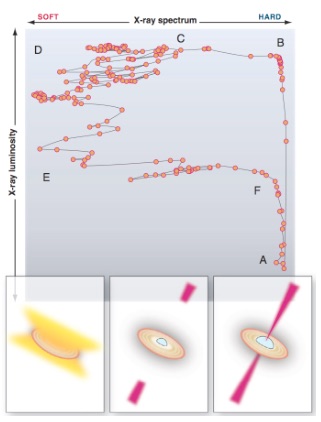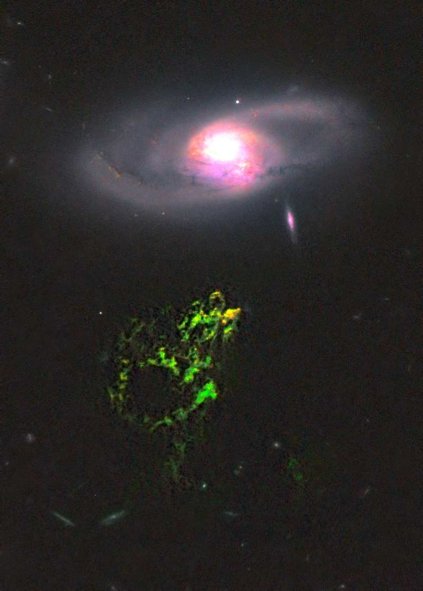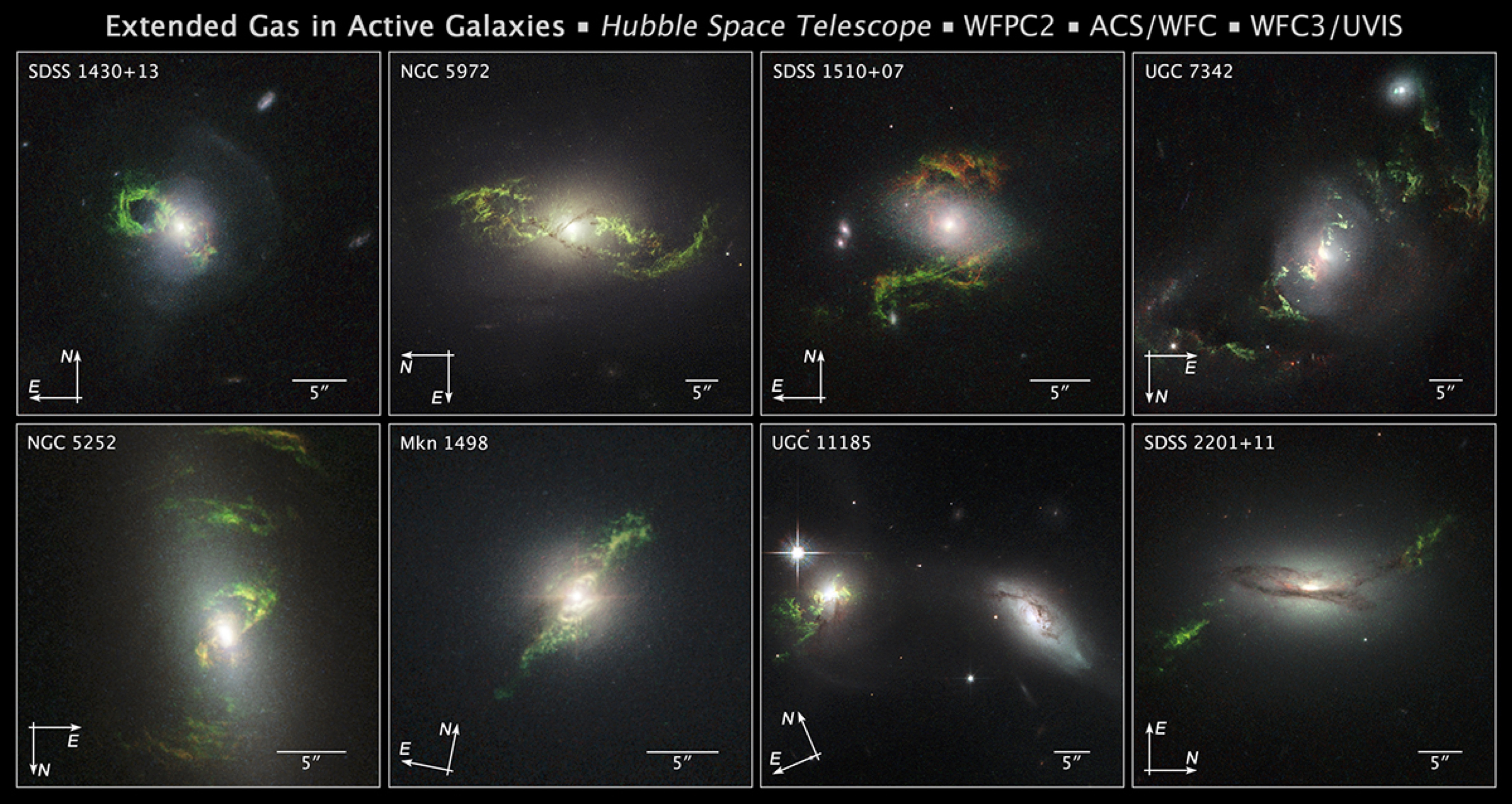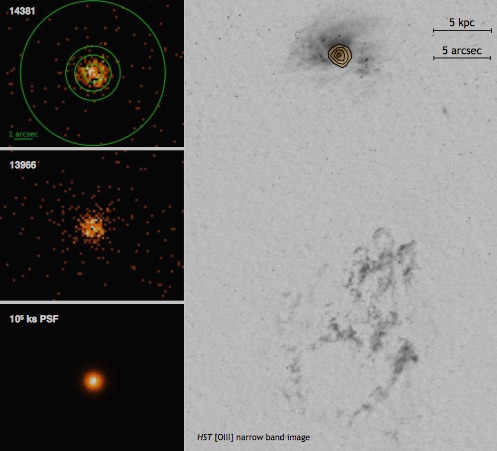
AGN Shutdown
Supermassive black holes occupy the centers of many, possibly most galaxies. Sometimes they are in a luminous quasar state, during which the black hole accretes very rapidly and the infalling material produces some of the most luminous emission in the universe.
This is very different from what we see in Sagittarius A* (Sgr A*), the supermassive black hole at the center of our galaxy, which is currently fainter than some black holes in our galaxy, each of which is a million times less massive (although it is likely that Sgr A* was much brighter at some point in the not-too-distance cosmic past).
I am interested in the process by which these luminous active galactic nuclei (AGN) transition between bright high-accretion states and faint low-accretion states. We see smaller black holes in the Milky way make this transition very rapidly, but in AGN such a dramatic change can take many thousands of years!
But understanding this process in supermassive black holes is important to understanding galaxy formation and evolution: black holes are linked with their host galaxies, such that galaxies feeding the black holes and black holes affect star formation in their host galaxies.


IC 2497
and Hanny's Voorwerp
Keel et al., 2012,
AJ, 144, 66
The "smoking gun" for AGN shutdown is Hanny's Voorwerp. Hanny van Arkel, a Dutch citizen scientist for the Galaxy Zoo, discovered an odd blob offset from galaxy IC 2497. For this Voorwerp (Dutch for "object") to be illuminated, a bright quasar has to have been nearby. Only IC 2497 is close enough, but it's way too faint to be a quasar.
The implication is that IC 2497 must have been a quasar about 100,000 years ago, but has "shut down" since then!
The Galaxy Zoo scientists who came to this conclusion realized that we could study the process of AGN Shutdown by finding and examining other galaxies with extended emission (typically from hydrogen and ionized oxygen).

The Voorwerpjes
Keel et al., 2015, AJ, 149, 155I am in the process of studying these Voorwerpjes (the diminutive of Voorwerp) with a wide variety of data: with narrow line imaging from Hubble, we can map the emission history of the black hole on timescales of decades. With IFU spectroscopy from Gemini and slit spectroscopy from Hubble we get a more complete picture of the quasar spectrum, as well as the density and kinematics of the host galaxy.
One exciting aspect of this research: we see that these "fading AGN" blow bubbles into their surrounding gas! We see this radiative-to-kinematic transition occur in smaller black holes, so we would expect it from supermassive black holes. This process is hard to observe within a human lifespan, but several Voorwerpjes seem capture the moment when it happens!
We are observing this objects in X-rays with Chandra, XMM-Newton and NuSTAR. X-rays offer the most convincing demonstration that these black holes really have "shut down", since they show us the current accretion disk luminosity and can pass through obscuring material around the black hole.
Moreover, Chandra has the angular resolution to image the shock waves produced by the bubbles!

